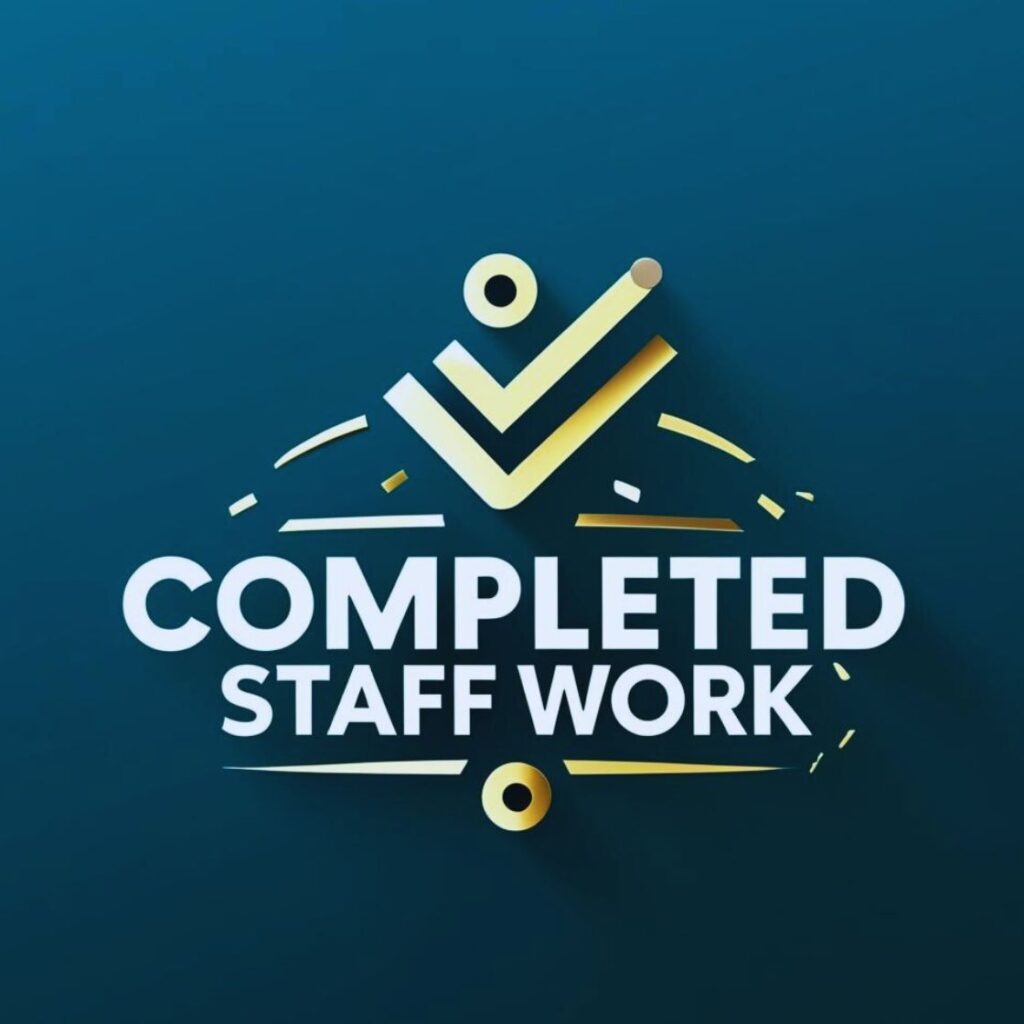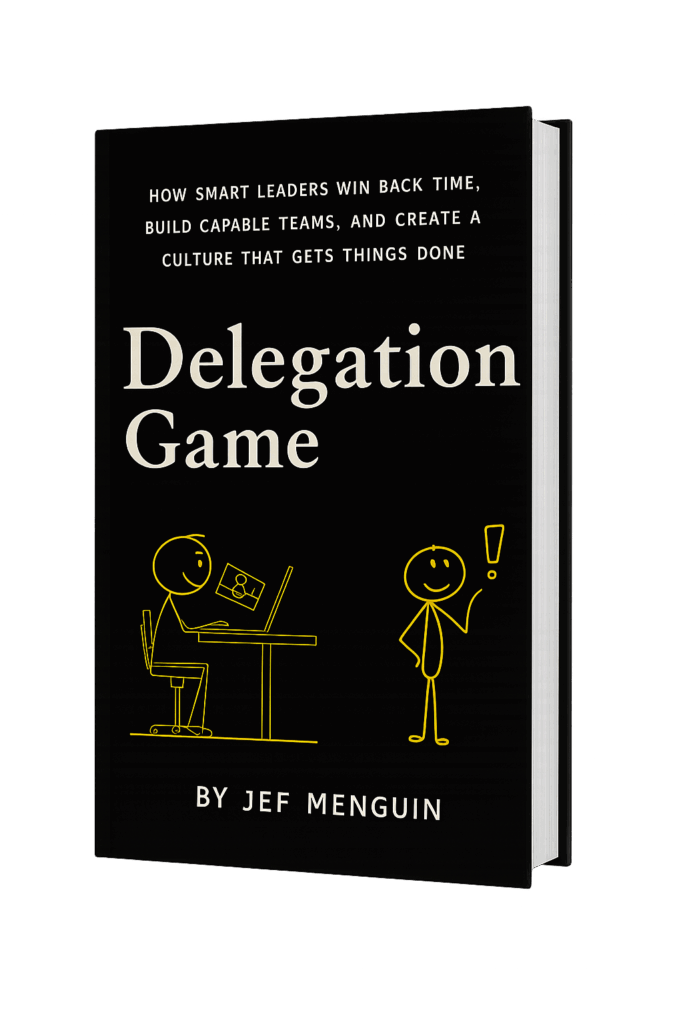Strategic skills for leaders include customer focus, business acumen, quality decision-making, and learning agility. These skills enable effective management, increased productivity, and successful goal attainment. You can learn these skills through professional development courses, mentorship, and experiential learning. Enhanced strategic skills bolster the leader’s ability to navigate change and drive business growth.
Being an effective leader requires more than just good people skills – it requires you to have a set of specific and advanced strategic skills.
There are dozens of skills for leaders. You may explore the 28 leadership skills. These 10 strategic skills for leaders are so crucial that you will find them even more useful ten years from now.
Strategic Skills for Leaders
Strategic skills for leaders are abilities that will help you think and play bigger. That means you have the ability to lead creatively and strategically. These skills for leaders can help design a great business, create new opportunities, and adapt to crises.
Rather than specific to an occupation or position, these skills focus on the individual skills to help grow, sustain, and scale a business. Creative and innovative employees are strategic thinkers.
While you can learn these skills in management workshops and career seminars, you can also foster these strategic skills through business-related projects.
Therefore, it can be beneficial for people in any role at a company to develop these skills, even if they aren’t in leadership roles.
The first set of strategic skills requires that you understand your business. Next, you can create value by knowing how to grow and scale your business.
Why are strategic skills important?
Leaders need to think like business owners. And business owners who make businesses grow think and play bigger. They need to develop the abilities to create and innovate, to be ahead of what’s possible, and to find new ways of doing things.
Leaders with strategic skills understand how to sustain and scale a business.
Strategic leadership skills are critical for the success of any organization.
Strategic leadership skills enable leaders to develop and communicate a clear vision for the organization. A compelling vision inspires and motivates employees, aligns the organization’s activities, and provides a roadmap for success.
Strategic leaders constantly seek new ways to innovate and stay ahead of the competition. They are unsatisfied with the status quo and always look for ways to improve and grow the organization.
Strategic leaders are skilled at adapting to changing market conditions, new technologies, and shifting customer needs. They are agile and can pivot quickly to take advantage of new opportunities or address emerging threats.
Strategic leaders are effective communicators who clearly articulate their vision and goals and inspire others to act. They can build strong relationships with stakeholders and communicate with various audiences.
Most importantly, strategic leaders are focused on results and skilled at executing their vision and goals. They can align resources, motivate teams, and drive progress toward their objectives.
🔑 Think you’re ready for the next level? Our leadership training is designed to help you make the leap from good to great. Let’s turn your potential into real, powerful leadership.

10 Strategic Skills for Leaders
Strategic leadership skills enable leaders to design business strategies that bring extraordinary results. When leaders develop strategic skills, they think and play bigger because they know how the business works and where it is going.
Skills are abilities or talents one needs to perform tasks.
Strategic thinkers are valuable assets of an organization. They can see beyond the day-to-day tactical activities. They can adapt to many situations, especially in times of crisis, because they can see the big picture. I will describe below some strategic leadership skills you can also develop.
1. Customer Focus
Organizations that win are those that create and deliver products that customers love. And the way they do it is by putting customers at the center of their business. We need leaders who focus on how to make the customers win.
The old kind of leaders pays more attention to their competition. They think of ways to outwit them and stop them. They believe that the only way to win is to monopolize the business. This still works.
But companies that grow 10x have leaders who focus on customers. They create value for their customers.
Here are some strategies that can help leaders develop a customer focus mindset and build customer-focus skills:
Understand the Customer.
You must understand your customers’ needs, preferences, and pain points. Interact with the customers, analyze customer data, and regularly conduct your customer research. One tool that I often recommend is the Empathy Map. It will help you understand your customers.
Set Customer-Centric Goals.
It is often a business case that managers pay more attention to increasing revenues and reducing costs. And that’s okay. That’s their job. And many need to understand that the best way to achieve that is to set goals prioritizing the customers’ needs. To dominate your market, you must create customer experiences that others cannot give.
Empower Employees.
Many managers complain about employees’ lack of accountability and initiative. The truth they don’t want to hear is that they failed to empower employees to make decisions that benefit the customers. Support employees with tools, training, and other resources that will help them delight their customers.
Create a Customer-Centric Culture.
You will often read this in books. There is much talk about shaping the culture of the organization. But most of these talks have something to do with how employees relate to each other.
I like that too.
But only if they are meant to delight your customers. Your mission, vision, and values must always include the customers. Create a customer-centric culture, and you will win.
Listen to Feedback.
Listening to feedback is the easiest but neglected tool for leaders. I encourage you to seek out and listen to customer feedback actively.
Feedback can provide valuable insights into how the company can improve its products, services, and overall customer experience.
Continuously Improve.
It will be good for your leadership to look for ways to improve the customer experience constantly. Stay up-to-date on industry trends, invest in new technologies, and experiment with new approaches.

2. Business Acumen
Business acumen is your ability to make sound business decisions based on business knowledge, skills, and experiences. Leaders must know how the business works, where it gets its revenues, and what customers expect.
They must know current and future trends, technologies, and policies. They know their competition and the innovations they are doing. They are also aware of the strategies and tactics that work in their industry.
We seldom learn business acumen in leadership skills training. Probably because most of these training programs are “soft skills”.
Those leaders who aspire to grow and scale a business must improve their business acumen.
Keep Learning
Dive into a never-ending journey of learning. Think of it like always having a book open about your industry, finances, and market trends.
For example, you might work in tech. You could read magazines about tech or join tech conferences. Maybe take a class about new tech trends or how to read market data. Staying updated helps you make better decisions.
Connect and Network:
Start conversations. Make friends in your field. Talking with diverse people helps you see different viewpoints and fresh ideas.
Let’s say you’re at a business lunch. A casual chat with someone could reveal what customers like. You can then tweak your product to fit these likes.
Experience First-hand
Take the plunge. Get your hands dirty. Trying out different roles or taking on tough projects helps you understand your business better.
Let’s imagine you manage a product. You could volunteer to help with a sales project. This could give you a sneak peek into how customers think and how to sell effectively.
Find Mentors
Look for guidance. A mentor can be your compass in the business world. They can help you navigate tricky situations. They can share what they did right and where they went wrong.
A mentor might tell you how they bounced back from a business low. This kind of real-world learning can’t be found in textbooks.
Think Strategically
Paint the big picture. Imagine what’s coming next. Practice making plans for the future and guessing their results.
If you run a retail business, for example, think about how changing customer tastes could affect your business. Then plan how to keep your business on top. This foresight helps sharpen your business smarts.

3. Tech Savvy
Being tech savvy is not a luxury for leaders, but a necessity. It goes beyond knowing how to use gadgets or software; it’s about understanding how technology can be harnessed to drive business success.
People expect you to be the go-to guy. Your technical skills ensure that you know what you are doing. It is a common mistake to think that leadership skills refer to “soft skills.” You’ve got to possess technical skills to make informed decisions.
A new generation of workers understands computer technology better than a generation ago. Entrepreneurs are looking at the opportunities artificial intelligence can bring. And we are shifting to design thinking.
The pandemic allowed us to see new ways of learning and working. We need to be one step ahead and being tech-savvy is a necessary step.
Embrace Technology
Don’t shy away from technology. Be open to using new gadgets, software, or apps. Start with simple tasks, like setting up an email account or using a smartphone, then gradually move to more complex tasks.
This hands-on experience will gradually increase your tech proficiency.
Take Online Courses
There are numerous free and paid online courses available to boost your tech skills. Websites like Coursera, Udemy, or Khan Academy offer courses on everything from basic computer skills to coding and data analysis.
Choose a course that suits your needs and commit to completing it.
Follow Tech Blogs and Podcasts
Stay updated with the latest tech news and trends by following tech blogs, podcasts, or YouTube channels.
They not only provide information about the latest gadgets and software but also offer tips and tutorials on how to use them.
Practice Regularly
Like any other skill, becoming tech-savvy requires regular practice.
Set aside some time each day to explore new software, learn a new tech skill, or work on a tech-related project. Consistent practice will help reinforce what you learn.
Join Tech Communities
There are numerous online communities where you can ask questions, share experiences, and learn from others.
Websites like Stack Overflow for programmers and TechLadies for women in tech can be valuable resources.
Try Coding
Understanding the basics of coding can greatly increase your tech savviness. It helps you understand how software works and can even enable you to create your own.
Websites like Codecademy offer free lessons in several programming languages.

4. Technical Learning
Can you quickly pick up technical knowledge and apply them? Technical learning refers to your ability to turn specialized knowledge into skills.
Skills in tagalog is kasanayan. The verb sanay means practice and the noun sanay means expert. This means that to become an expert or to develop skills, one must have deliberate practice.
Have you imagined yourself being the head of the IT department, yet you don’t know how IT works? Of course, that happens in patronage politics, but that will spell trouble for the business.
They seek exposure and experiences with new technologies. As a result, they are not easily intimidated by something they don’t know.
I remember, many years ago, that many teachers are too afraid to use desktop computers. There is even a phobia named after that. The problem is that we expect teachers to be one step ahead.
The same is valid with your organization. Leaders who refuse to expose themselves to new technologies won’t be able to provide input in decision-making.
Being an HR professional, for example, should not limit you to learning only “people skills.” Instead, understanding how your technology and people work can make you a valuable contributor to your organization.
Break It Down
Complex technical concepts can seem daunting, but they become manageable when broken down into smaller parts.
Instead of trying to understand a whole programming language at once, for example, learn one element at a time. This makes it easier to grasp and remember.
Mix Theory with Practice
A theory provides the foundation, but hands-on practice makes it stick. If you’re learning about network security, set up a home network and try to secure it.
Applying theory to real-world scenarios reinforces learning and increases your understanding.
Leverage Online Resources
The internet is a treasure trove of technical knowledge. Use platforms like Coursera, edX, or Khan Academy to take courses, and websites like GitHub to explore real projects.
These resources can supplement your learning and provide practical examples.
Join Study Groups or Forums
Learning isn’t always a solitary task. Joining study groups or online forums can be beneficial. Here, you can discuss difficult concepts, share resources, and learn from the experiences of others.
Websites like Stack Overflow offer communities where learners can interact and help each other.
Regular Revision and Practice
Repetition is key in technical learning. Regularly revise what you’ve learned and practice it, to reinforce the knowledge.
If you’re learning a programming language, for instance, write code daily. This constant engagement will help you retain information and improve your skills.
A leader needs to make good decisions. Developing the following strategic skills can help you solve problems, make decisions, and take action in every situation.

5. Quality Decision Making
We expect leaders to take action in situations. Most of the actions they take require big and small decisions. Courageous leaders are not afraid to make quick decisions. But not all decision-makers think equally.
Many leaders make decisions based on what their eyes can see. But good leaders use insight and foresight in making quality decisions. Good decisions are based on data, analysis, intuition, wisdom, experience, and good judgment.
You must be patient in collecting information and humble enough to ask for other people’s opinions and thoughts. It would be best if you had to also the courage to take risks even when not all information is available.
No one is ever right all the time. But the failure or fear to make decisions often cause more problems than not deciding at all.
Our experiences with Covid-19 demonstrated how arrogant leaders ignore the available scientific data. They refused to listen to experts. Because of their arrogance, millions of people died.
On the other hand, we have witnessed leaders who made quick and quality decisions. They consider all the available information. They listened to experts. They made quick decisions that saved thousands of lives.
Foster a Data-Driven Culture
A data-driven approach can greatly enhance decision-making capabilities. Start by encouraging the collection and analysis of relevant data within your organization. Use these insights to make informed decisions.
For instance, use customer behavior data to inform marketing strategies.
When it comes to decision-making, some leaders seem to have a sixth sense. I believe data is our sixth sense.
Develop Emotional Intelligence:
Decisions can’t always be made on data alone. Emotional intelligence allows leaders to consider team morale, customer sentiment, and other subjective factors.
Practice empathy and active listening, and strive to understand the emotional context behind the data.
Encourage Diverse Perspectives
Promote an environment where different viewpoints are valued. Diversity of thought often leads to more innovative solutions.
You could create a team from different backgrounds or departments to tackle a decision. This could provide a more comprehensive view of the situation, helping to avoid blind spots.
Reflect on Past Decisions
Look back on previous decisions, whether successful or not. What can you learn from them? Did a project fail because of a hasty decision or an ignored red flag?
Reflecting on these experiences can help improve your decision-making process, making it more robust and reliable.
I observed that the more I reflect on my previous decisions, I become more ready for the next.

6. Learning on the Fly
Most of the skills we learned, we learned through deliberate practice. We can do the most complex tasks because we have done them many times.
Learning on the fly is a skill that distinguishes strategic leaders from others. This skill allows leaders to do things for the first time.
Learning on the fly allows them to solve problems they’ve never seen before. Most people won’t try solutions they’ve never tried before. This is why some managers like to buy tried-and-tested solutions.
Strategic leaders analyze problems in a new context and in new ways. The world is changing fast. Leaders must accept that they may need to apply first-time solutions or be left behind. It involves risking for you will try less than perfect solutions.
We all need to learn on the fly.
Learning on the fly is related to agile learning.
Consider these four strategies that will help you learn on the fly.
Cultivate Curiosity
Keep your mind open. Be curious. Curiosity fuels learning. It pushes you to explore new concepts. You might not understand something right away. That’s okay. Ask questions. Dig deeper.
For example, if you’re in a meeting about blockchain, don’t shy away if you don’t understand. Ask your colleagues to explain. Look up information online. You’ll gain a new piece of knowledge.
Adapt to Changes
Things change fast. Technologies evolve. Markets shift. As a leader, you need to adapt. How? Stay updated. Read about new trends. Attend industry events. This way, you’re not caught off guard.
Let’s say your company wants to use AI for customer service. Don’t wait for formal training. Start learning about AI and how it can help. Be proactive in your learning.
Utilize Resources
Learning resources are everywhere. Use them. Websites. Books. Podcasts. Online courses. They’re full of valuable information.
If you’re learning about data analytics, find a related podcast. Listen to it during your commute. Find an online course. Spend an hour a day learning. You’ll soon notice you’re picking up new concepts faster.
Learn from Mistakes
Mistakes happen. That’s fine. What’s important is learning from them. Did a project fail? Analyze why. What could have been done better? Reflect on this.
Take it as a learning opportunity. It’s real-world knowledge. It will help you make better decisions in the future. Remember, every mistake brings a chance to learn.

7. Problem-Solving
We all solve problems every day. Most problems are minor; we don’t need to think long to solve them. However, a few big problems make us think long and hard before we solve them.
Most of us know how to solve problems. But most people don’t do it right, however.
I have seen this many times in my team-building and leadership development programs. Most leaders don’t define the problem and jump to conclusions. And some leaders over-analyze the issues; they don’t try out anything.
Strategic leaders use simple but powerful methods to solve complex problems. They explore all possible sources for answers. They can see hidden problems. And they look beyond the obvious.
Leaders who can solve difficult and complex problems are what organizations need today.
Embrace Different Perspectives
Look at problems from various angles. Different viewpoints bring unique solutions. Encourage your team to share their thoughts. You might have a certain way to solve a problem. But someone else might have a better way.
For example, if a project is running late, ask your team for input. They might suggest solutions you hadn’t considered. By doing so, you’re not only solving the problem but also creating a collaborative environment.
Break Down the Problem
Large problems can seem overwhelming. Break them into smaller parts. This makes them more manageable. It allows you to tackle one issue at a time.
For instance, if a product launch is delayed, identify individual issues causing the delay. Maybe it’s a supply chain problem or a marketing issue. Solve each one individually. You’ll find the overall problem becomes easier to handle.
Learn Analytical Tools
Problem-solving often requires analysis. Learn analytical tools and techniques. They can help you understand the problem better. Tools like SWOT or PESTLE analysis can provide valuable insights.
Say you’re facing a business challenge. Use SWOT analysis to understand your strengths, weaknesses, opportunities, and threats related to the problem. This gives a clear picture, helping you devise a robust solution.
Reflect and Learn from Past Problems
Remember past problems. What worked then? What didn’t? Reflecting on past solutions can give insights. These insights can guide you in future problem-solving.
Maybe a past decision didn’t work out well. Understand why. Use this knowledge next time you’re faced with a similar problem. Learning from the past is a valuable problem-solving strategy.
Read: Discover how good supervisors solve problems in seven simple steps.

8. Balances Stakeholders
The leaders’ ability to balance stakeholders allows them to make good decisions for most people. The objective is always to create a win-win decision. Though it is not always possible, stakeholders’ support helps leaders make quality decisions.
What can be done?
Identify the key stakeholders. They are those who will be the most affected by your actions. They can be the most resistant. They can also be those whose support you will need the most.
Using an empathy map is a good start. Understanding each stakeholder’s interest and balancing it for the greater interest can help you make better decisions.
This strategic skill helps you become more persuasive too. You will speak about how each stakeholder benefits from your decisions.
Understand Stakeholder Needs
To balance stakeholders, you must understand their needs. Each stakeholder group has unique interests. Customers want quality products. Employees seek fair treatment. Investors aim for profit. Understand these different needs. This helps to balance decisions and actions.
For example, before launching a new product, seek feedback. Ask customers what they want. Ask employees what’s feasible. Check with investors about financial implications. This gives a balanced understanding of the needs and constraints.
Communicate often.
Communication plays a vital role. It’s how you convey decisions and their reasons to stakeholders. Clear, regular communication builds trust. It ensures all stakeholders feel valued and heard.
For instance, if a decision impacts employees, explain it to them. Tell them why it’s needed. Address their concerns. Similarly, keep customers informed about product changes. And provide investors with regular updates. This clear communication helps maintain balance among stakeholders.
Prioritize and Negotiate
Sometimes, stakeholder needs conflict.
Here, you need to prioritize. What’s most crucial for your business right now? The answer will guide your decisions. But remember, prioritizing doesn’t mean ignoring.
Suppose you’re facing budget cuts. You might need to prioritize financial stability over expansion. But, you can negotiate. Maybe find ways to reduce costs without impacting employee benefits.
It’s about finding a balanced solution.
Foster Stakeholder Engagement
Promote active stakeholder engagement. Make stakeholders part of the process. This fosters a sense of ownership. It also gives you valuable insights.
For example, invite customers to product testing. Their feedback can improve the product. Involve employees in decision-making. Their ideas could bring innovative solutions.
The more engaged your stakeholders, the easier it is to maintain balance.
Strategic leaders explore what’s new and different. They understand that we cannot solve new problems with same-same solutions. They have 1000x mindset – and they think different.

9. Strategic Mindset
You can find many tactical leaders in organizations. They know how to solve problems in the long term. But there are very few who can determine which products, services, and solutions can bring them good results over a long time.
Consider how our leader decides for our schools. After two years of being absent from classroom learning, our government decided to send our kids back to face-to-face education again. Covid-19 is gone (not really, we just got used to it), so we can send kids to school.
However, the previous government lacked foresight, and the new administration talks more about English as a medium of instruction than taking care of classroom shortages.
Leaders must constantly challenge themselves to play bigger and think differently. A strategic mindset is a leader’s ability to visualize the future and prepare for it.
Many of our problems are predictable, but we elected leaders who do not seem to care. You don’t want this kind of leader in your company.
What can you do?
You must take care of the issues of the day and prepare your company for what is to come. You anticipate future consequences based on trends and available data.
You can piggyback on what the advanced countries already know. They are talking about Industry 4.0 and Agri 4.0. You can develop skills that will put you ahead of what’s possible.
Keep an Eye on the Big Picture
To develop a strategic mindset, focus on the big picture. It’s easy to get lost in daily tasks. But don’t forget the overall goals. This helps to align your actions strategically.
If you are familiar with the 80/20 principle, this means that you identify your 20 percent. Then, work on the 20 percent of your 20 percent.
Another way to look at it is to consider activities that multiply results.
For instance, if your ultimate goal is business expansion, keep that in mind when making decisions. Maybe a short-term cost-cutting measure conflicts with long-term growth. Being mindful of the big picture helps you choose strategies that align with your ultimate goal.
Learn from the Past, Plan for the Future
Use past experiences to guide future decisions. But don’t dwell on the past. Instead, learn from it and look forward. Apply those lessons to future strategies.
If a marketing strategy worked well in the past, understand why. Can it work again in the future? Or perhaps an unsuccessful project can offer learning points for better decision-making. Reflecting on the past and planning for the future enhances your strategic mindset.
And we must keep in mind that there are always two crises to solve. For example, the pandemic needs immediate actions/solutions from leaders. It also requires them to plan for the new normal.
Foster Curiosity and Innovation
A strategic mindset isn’t just about following established paths. It’s also about creating new ones. Stay curious and open to innovation. This fosters strategic thinking.
For example, instead of following industry norms, consider how you can disrupt them. If everyone in your industry is targeting the same customer segment, could there be a niche that’s being overlooked? Fostering curiosity and innovation can lead to strategic breakthroughs.
Adapt and Be Resilient
In an ever-changing business landscape, resilience is key. It’s not enough to create a strategy and stick to it rigidly. You need to adapt when circumstances change.
Suppose a competitor releases a similar product. Or a global event disrupts your supply chain. Rather than resisting these changes, adapt your strategy. This adaptability and resilience are crucial components of a strategic mindset.
Strategic Mindset vs. Strategic Planning
Strategic Mindset
A strategic mindset refers to the way a person thinks about, assesses, views, and creates the future for themselves and others. It’s an individual’s ability to think in big-picture terms, view the organization from a wide angle, and understand how it fits into its wider environment.
It’s about anticipating and imagining multiple plausible futures, being open to new experiences, and being adaptive to change.
People with a strategic mindset are constantly questioning and looking for better ways to achieve goals. They are future-oriented, and they constantly monitor the environment for opportunities and threats. They are comfortable with complexity and ambiguity and are able to make connections between seemingly unrelated information.
Strategic Planning
Strategic planning, on the other hand, is a systematic process. It’s about defining the direction of the organization and making decisions on allocating its resources to pursue this strategy. It involves setting goals, determining actions to achieve the goals, and mobilizing resources to execute the actions.
Strategic planning involves a structured process of analysis, choice, and implementation. It typically involves defining a mission, vision, and strategic objectives; conducting an environmental scan (SWOT analysis); developing strategic initiatives; and creating an implementation plan.
Strategic planning isn’t a leadership skill. It requires many leadership skills to do effective strategic planning.
While a strategic mindset is about the cognitive approach to strategic issues, strategic planning is about the process and tools used to develop and execute strategy.
Both are critical for effective leadership and successful organizational performance.

10. Cultivate Innovation
You can turn employees into intrapreneurs. You can develop innovators. You can cultivate creativity and innovation in your organization.
Innovators think differently. They see things using different lenses.
They fully understand their markets and see their products and services as solutions. They create and design products that clients are hungry for.
Unlike some salespeople who convince you that you need their products, innovative leaders create products that delight you. They look for many possibilities, some of which the market never imagined they need.
They are aware that introducing something new exposes them to rejection. But innovative leaders never fail because every rejection is an opportunity to improve and find customer-required products.
You can develop this strategic skill. Practice brainstorming tools. Have the courage to introduce new ideas. Some tools will move you from inspiration to execution.
Here are some ways to cultivate innovative skills:
Be curious.
Encourage curiosity and a thirst for knowledge. Read widely and seek out new experiences and perspectives. Ask questions and explore different approaches to problem-solving.
Create an open and supportive Environment.
Make people feel comfortable sharing ideas and taking risks. No ideas are useless. You can always look for the gems. But more importantly, let everyone know they don’t need world-changing ideas to communicate with you.
Experiment and Iterate
Encourage experimentation and iteration. As a leader, don’t be afraid to try new things, and be willing to pivot if something isn’t working. Learn from your successes and failures and use that knowledge to improve.
By cultivating these innovative skills, you can stay ahead of the curve and drive meaningful change and progress in your company.
Skills for Leaders versus Skills for Managers
Leadership and management roles are distinct yet intertwined. Leaders inspire and set the strategic vision, thriving in ambiguity, fostering innovation, and motivating teams. They’re big-picture thinkers, ready to challenge the status quo.
Managers, on the other hand, excel in execution. They plan, organize, monitor performance, and ensure efficiency in day-to-day operations. Their focus is on meeting objectives within established structures.
Yet, there’s significant overlap.
Both roles require effective communication, relationship-building, decision-making, and conflict resolution. They both navigate change and problem-solve.
While leaders steer the organization’s direction, managers ensure the journey is smooth and efficient. In the dynamic modern workplace, successful individuals seamlessly blend these skill sets, aptly switching between leadership and management as required.

Leadership Articles
You can further develop your strategic skills as a leader. Explore the following articles to continue your leadership journey.
- What Leadership Is. Accelerate your leadership learning. Begin by understanding what leadership is all about.
- Increase Leadership Capability. Become an effective leader. Find out what are the things to consider so you can increase your capability.
- Walk the Talk. Leaders demonstrate how things are done in organizations. You can practice what you preach.
- 19 Effective Leadership Principles. Develop your leadership principles.
- 5 Principles to Guide Adaptive Leadership. HBR provided five principles that will guide leaders in times of a crisis like Covid-19.
- 4 Reasons to Invest in Leadership Development. Leadership development provides your organization a greater chance to succeed.
- Top 17 Qualities of Good Leaders. Do you want to become a good leader? Find out which of these qualities you want to cultivate.
- 3 Skills Needed for Adaptive Leadership. These three skills are resilience, influence, and leading change.
- What are the Qualities of Visionary Leaders? They see the world differently, help others see it, and make things happen. This article is informative.
- Develop a personal development plan. I recommend the 4DX framework in developing your personal development plan.
FAQs
If you have questions about developing strategic skills or want help designing workshops that develop strategic thinking in your organization, contact me via learn@jefmenguin.com. I will be more than happy to help you.



